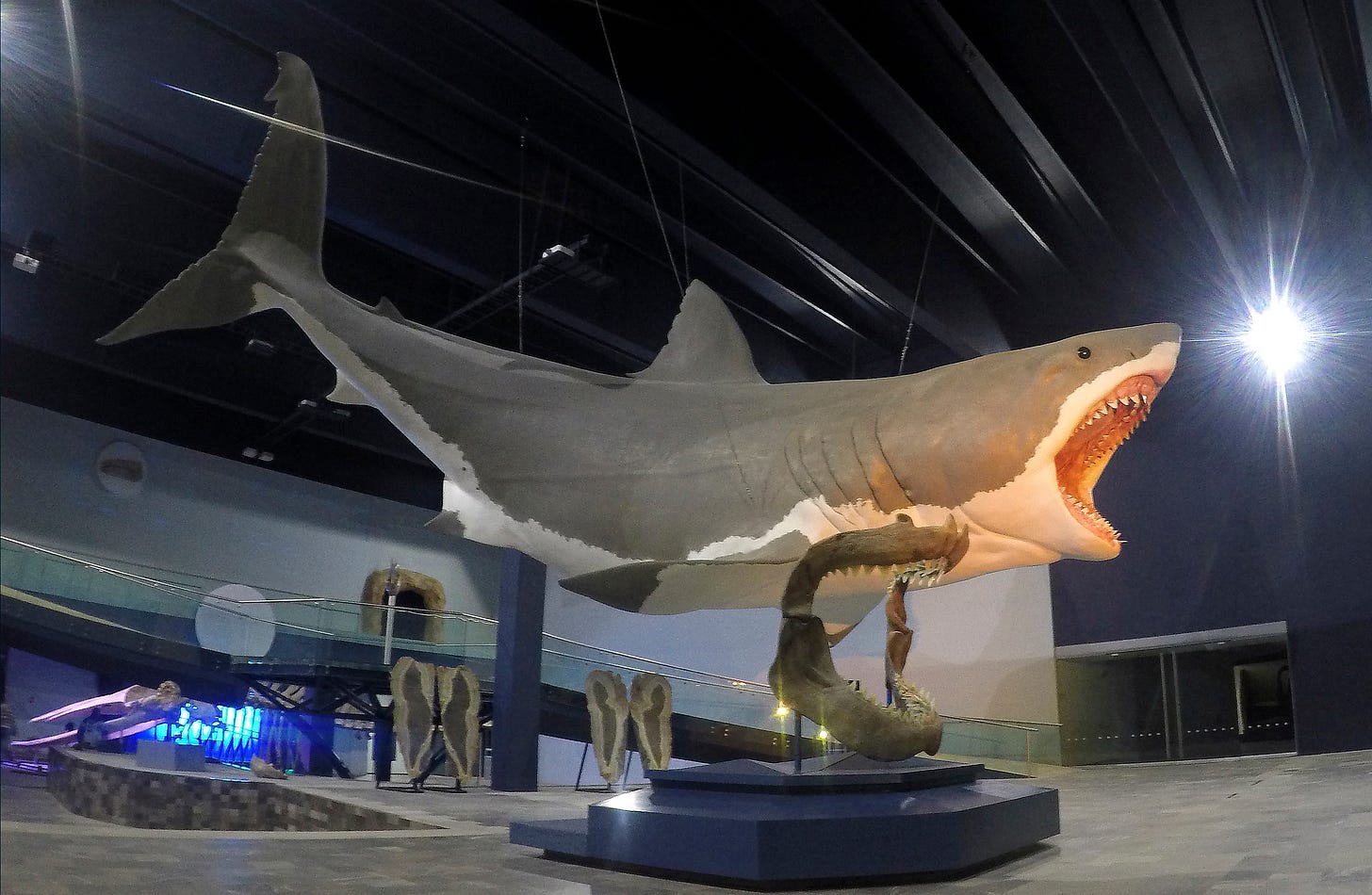Welcome to Thursday Things! If you enjoy this edition, please click the heart icon in the header or at the end of the post to let me know.
Cash money! Photo by Alexander Grey on Unsplash
A story with bite
I’ve been keeping an eye on this research in Japan, because I think that if the effort is successful it will improve life for millions, if not billions, of people.
Miracle tooth REGROWING drug 'to begin human trials next year'
A drug designed to regrow teeth is set to begin human trials early next year.
The medication, a game-changer if proven to work, offers hope for millions living with dentures.
Researchers in Japan hope the treatment, yet to be named, could be rolled out to patients by 2030 if successful.
That’s only seven years away — if all goes well.
Early tests showed the drug helped mice and ferrets regrow teeth.
Proving once again that mice — and, apparently ferrets — get all the good stuff first.
The medication is intended for people who lack a full set of adult teeth for genetic reasons.
But the scientists described it as 'every dentist's dream', suggesting it may be used more widely in the future.
Japanese media reported clinical trials are set to begin in July 2024.
The drug, an antibody treatment, works by suppressing USAG-1.
The gene limits the growth of teeth, studies have shown.
The process is hoped to spark a 'third generation' of teeth in humans, who begin with their baby teeth before developing their permanent set.
Hey, if sharks can do it, why not us?
Meanwhile, keep brushing regularly! Photo by Diana Polekhina on Unsplash
Dividend without end
I’m fascinated by stories about the oldest company in continuous operation, or the oldest hotel or bar or whatever it may be. I once ate lunch at what claimed to be the oldest restaurant in Iceland. Was it really? I have no idea. But I felt like I was eating not just fish stew, but history.
This item crossed my browser a few days ago — Meet Wall Street's Greatest Dividend Stock: A Small-Cap Company 99.9% of Investors Have Probably Never Heard Of
In this instance, “greatest dividend stock” doesn’t mean the stock with the best return or that is the best investment, but simply that “This company has been consistently paying a dividend since James Madison was president of the United States... in 1816.”
(And let me pause here to say that while our friends at The Motley Fool (TMF) do give investment advice, and often quite good advice, we here at Thursday Things do not. So this item is by no means investment advice or a recommendation to buy any of the stocks mentioned.)
Quoting TMF:
Though there are a number of strategies that can help investors build wealth, buying dividend stocks is, arguably, one of the smartest ways to put your money to work.
Publicly traded companies that pay a regular dividend are usually profitable on a recurring basis and offer clear long-term growth outlooks. In other words, these are businesses investors can plug into their portfolios and not worry about.
Aside from the dividend itself, companies that pay a regular recurring dividend tend to outperform companies that don’t:
According to a report published in 2013 by J.P. Morgan Asset Management, a division of money-center bank JPMorgan Chase, companies that initiated and grew their payouts between 1972 and 2012 generated an annualized return of 9.5%. By comparison, publicly traded stocks that didn't offer a payout between 1972 and 2012 delivered a meager annualized return of 1.6%.
Many dividend investors therefore like to focus on so-called “Dividend Kings”, or companies that have increased their base annual dividend for 50 or more consecutive years. Many of these companies are familiar names like Coca-Cola, Johnson & Johnson, Proctor & Gamble, etc. That’s an impressive run!
Then there are companies that have been paying a regular, though not necessarily ever increasing, dividend for more than 100 years. There are a bout a dozen of those, including ExxonMobil (since 1882, including its predecessor form as Standard Oil), and Eli Lilly (since 1885).
But they’re all pikers compared to … York Water.
What? Who?
York Water is a water utility that serves three counties of South-Central Pennsylvania. It has paid a dividend since it was founded in February, 1816, and hasn’t missed a dividend payment sense then!
Put another way, if you had invested $1000 in York Water at its founding then today — well, I have no idea how much money you would have, but you would be more than 207 years old!
And you’d have been collecting dividends the whole time! This calls for a drink!
May I suggest you make it a drink of cool, refreshing York Water water, the most consistent water of all?
Learn more about the History of The York Water Company:
The York Water Company was founded in 1816 and is the oldest investor-owned utility in the nation.
In the late 1700s and early 1800’s the greatest fear in many colonial towns was: fire. During this period before electricity and central heating, homes and businesses were heated and lit with flames: oil lamps, candles, and fire places were part of everyday life. On numerous occasions fire had almost destroyed York. Bucket brigades from the nearest well were often inadequate protection for the risks presented by fires. A public water supply could provide the necessary volume of water and even enough pressure to help feed the hand pumps that the local fire companies operated.
1816. Incorporation. On February 23, 1816, the York Water Company was incorporated. A group of local businessmen met at the Indian King Tavern, issued stock, and formed the company. During the first year of operation the Company contracted for 16,000 feet of logs for pipes with a diameter of 14-20 inches and a length of 12-13 feet. The logs were bored out with a hole 3-4 inches in diameter. The logs were floated down the Susquehanna River and transported over land from Wrightsville.
You’ll never believe what happens next…
Stay hydrated with delicious water! Photo by manu schwendener on Unsplash
Biodiversity is our strength
Human beings, i.e. homo sapiens, have been around for something like 300,000 years, give or take. This is barely a blip in the history of the Earth, or even the history of life on Earth. Yet we humans tend to have an exaggerated sense of our own importance in the scheme of things. Yet old planet Earth was chugging along just fine before we showed up — and could keep on chugging without us,
Our planet has been home to up to 4 billion species of plants and animals over the last 600 million years or so. It is estimated that more than 99% of all species that ever existed are now extinct. And, frankly, good riddance to prehistoric sharks the size of a bus. No one needs that!
And while humans took out some of these species — sorry, passenger pigeons and dodos! — mostly because they were too delicious to resist, our efforts are miniscule.
The Earth itself is the real killer. And the murder weapon was … plate tectonics.
An Explosion of Life Happens on Earth Every 36 Million Years. Now We Know Why.
Marine life booms with a spate of new species every 36 million years, and tectonic heaving is the indirect reason, new research has found.
A deep analysis of the fossil and geological record reveals a changing sea level that occurs in response to a 36-million-year cycle of tectonic movement.
This, a team led by geologist Slah Boulila of Sorbonne University in France has found, disrupts several ecosystems, causing many species to struggle – and new ones to blossom to fill the new ecological niches that emerge.
"In terms of tectonics, the 36-million-year cycle marks alterations between faster and slower seafloor spreading, leading to cyclical depth changes in ocean basins and in the tectonic transfer of water into the deep Earth," says geoscientist Dietmar Müller of the University of Sydney.
"These in turn have led to fluctuations in the flooding and drying up of continents, with periods of extensive shallow seas fostering biodiversity."
And yet you see the tradeoff: the disrupted ecosystems as seas get deeper or more shallow brings an end to some existing species, will creating the conditions for new species to emerge and flourish. The big wheel keeps on turning.
At least until the Sun explodes and kills us all. It would be wise for Life to find a way out of the solar system before then. We’ve still got a few billion years to work the problem — but you know how people like to procrastinate!
I, for one, am not sorry these things are gone. 16 meters long Megalodon representation in "Museo de la Evolucion", Puebla, Mexico. Image: Sergiodlarosa CC BY-SA 4.0
Thank you for reading!
Please click the hearts, leave a comment, and use the share feature to send this issue to a friend who might enjoy it. See you next Thursday!






